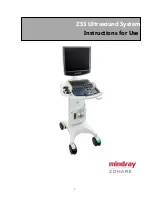
DT1102 (PS)
20220202-V0
7
3.3. Operating principle
Area of application
The DT1102 (PS) Switch Configurable I/O Galvanic Isolator
provide signal transmission and conversion between transmitters and
signal processing units.
The instruments feature complete 3-way isolation: the input, the
output and the power supply are isolated from each other.
The instrument has two inputs:
1. 0(4)-20 mADC current or*
2. 0(2)-10 VDC voltage*
and two outputs:
1. 0(4)-20 mADC current or*
2. 0(2)-10 VDC voltage.
* only one input and one output are active together
The input/output ranges are switch selectable.
The DT1102 (PS) - providing a 20 VDC, 20 mA supply on the input –
for supplying 4-20 mA passive transmitters.
The front panel LED indicators provide information about the
operating status of the device. (power on state, error states)
Principle of operation
The input current flows through the measuring resistor or the input
voltage divides through the attenuator. This voltage drop is led to a
24 bit A/D converter. The digital output signal of the A/D converter is
processed by a microcontroller.
The microcontroller produces a pulse width modulated (PWM) output
signal. The pulse width is proportional to the processed, measuring
value. The output pulse is galvanic isolated by an optocoupler. After
filtering the pulse is converted into analogue current or voltage signal.
The input/output ranges are switch configurable.
The internal power supplies are generated by an isolated dual output
DC/DC converter, using planar transformer technology.
Power supply
The instrument has two different power supply version:
DT1102
:
Power supply: 24 VDC ±10%
DT1102 PS
:
Power supply: 230 V AC/DC ±10%








































